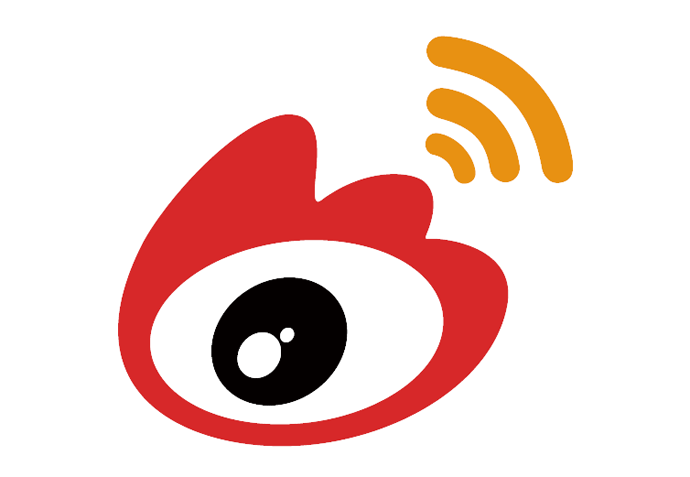
Image: Audi insperation, Flickr
Decades ago, when chemists were churning out new discoveries and industry was making "better living through chemistry," the belief was widely held that chemicals do not cross the placenta. We now know that mother's chemical exposure can affect her baby's chances for a normal, healthy life, especially in early pregnancy when a fetus' growth is being carefully regulated by a host of natural chemical messengers in the womb.
Should you worry? Well, first of all, women have been giving
birth joyfully for decades after the advent of industrialization. It is
a thrilling, suspense-ridden process with no certain answers -- with a
high probability that you will have created the greatest treasure of
your life. Don't let fears overwhelm your enjoyment of nine months of
miracles. But do use common sense, and a little dose of facts, to help
protect your little bundle of joy as much as you can. Look at the tips
in bold for some easy suggestions.
1. Luxury Bath Products

Image: Limpciano, Flickr
This
is good news for women who do not want to waste money buying expensive
organic products for themselves during pregnancy: Tests by German green
consumer magazine Öko-Test (Eco-Test) found that cheap shower
creams were composed of safer ingredients. The high-end products used
more exotic ingredients, frequently including chemicals that can cause
allergies, even roaming into riskier territory such as cancer-causing
ingredients. So leave the stuff with the fancy names on the shelf and
stick with a classic low-end soap for the shower.
Baby Yourself:
Buy products especially formulated for infants and children.
Manufacturers make more effort to avoid questionable ingredients in
these products.
2. Nail Care

Image: Scragz, Flickr
Working in a nail salon made Time
magazine's list of the worst jobs in America. Anecdotes about health
problems experienced by workers include stillbirths, birth defects, and
developmental issues -- although no studies have been published on birth
defects among nail workers. A North Carolina study did find an increased risk of spontaneous abortion among nail salon employees. Consumer campaigns prompted by these concerns have forced suppliers to reformulate and reduce the "toxic trio:"
dibutyl phthalate, formaldehyde and toluene. But nail products continue
to include many ingredients that are inadequately tested or which have
raised concerns about reproductive toxicity. If you are just having your
nails done once every couple of weeks, is that a "safe dose?" The fact
is, no one knows. Better safe than sorry.
Nicer Nails:
Even if your friends know you for having the most flamboyant painted
nails, wear naked nails with pride when you are pregnant. Treat yourself
to a manicure and/or pedicure without using any chemicals. Be sure to
select a well-ventilated salon if you have it done professionally.
3. Spray-on Tanning

Image: The Female View
The Food and Drug Administration
has approved Dihydroxyacetone (DHA) for use in chemical tanning. The
DHA works by reacting with the dead layer of surface skin in much the
same way bread browns when toasted. It has been shown not to absorb into
the living skin below the dead layer, and is therefore considered safer
than suntanning -- which is known to cause cancer. However, these
approvals do not take into account the risks of inhaling the particles
of spray that get into the air during "tanning".
Studies suggest that DHA may be mutagenic
and can cause primary DNA damage. There is no test data publicly
available on development toxicity. Bottom line: spray-on tans may be
healthier when applied with proper protections on healthy adults, but
it's not worth the (mostly unknown) risk to your developing fetus.
Tan Teetotaling:
elevated body temperature can also be dangerous to your unborn baby, so
tanning beds are not a good option either. Spin your skin as
"porcelain" not "pale."
4. Skin Whitening

Image: Frerieke, Flickr
Skin
lightening products contain chemicals that interfere with enzymatic
processes that lead to production of melanin, which darkens the skin.
This drug-like action has earned lightening products the nickname
"cosmeceuticals." Typically hydroquinone or glutathione are used as the
active ingredient; mostly mercury has been eliminated from whitening
products. Alternatives claiming to be safer are appearing as safety concerns have led to calls for bans on ingredients like hydroquinone.
Unfortunately,
pregnancy often induces darkening of the skin, and can lead to a
pigment "mask" on the face, making the urge to action stronger. In all
cases, doctors recommend waiting until after your pregnancy before
considering any skin lightening treatments.
Safer Solutions? Take care. Alternatives often simply have less testing evidence of problems, not more proof of safety.
5. Chemical Hair Removal

Image: Katutaide, Flickr
The active ingredient in hair removal products is usually some form of thioglycolic acid. There are no studies showing that this chemical is unsafe on the skin during pregnancy. But there are also no studies showing it is safe. The EU limits the ingredient to a maximum of 5% (as thioglycolic acid) in depilatories (hair removal products). In the US, independent panel the Cosmetic Ingredient Review
(CIR) found it to be safe up to levels of 15.2% (as thioglycolic acid).
The thioglycolic acid reacts chemically with disulfide bonds in hair.
Because these ingredients are aggressive enough to react chemically, and
no studies have been done to detect potential reprotoxic effects, we
recommend the precautionary principle: Leave these on the shelf until
after the pregnancy.
Shave Sharing: Get your
partner involved. Create a special bond as he helps you shave those
places you can no longer even see, much less reach.
6. Heavy Fragrances

Image: kjunstorm, Flickr
Many fragrances contain phthalates
as carriers. There are a wide range of phthalates, some of which are
less harmful than others. But these ingredients are rarely disclosed on
labels, hiding behind the general descriptor fragrance. If you
are not certain the product is free of phthalates with potential for
reproductive toxicity, it is better to avoid it during pregnancy.
Phthalates can imitate natural hormones in the body responsible for the
proper growth and development of a fetus. Because growth is very
sensitive to small concentrations of these hormones, it is considered
dangerous to have even low levels of exposure during pregnancy.
Fragrance-free: While you are minimizing perfumed beauty products, do away with air fresheners and any other product intended to release scent.
7. Sticky or Stinky

Image: justj0000lie, Flickr
A
strong smell usually indicates either (1) a product with volatile
organics that evaporate easily into the air, or (2) a product that forms
a misty or dusty cloud. Either is an indication that you may be
inhaling chemicals...a direct and efficient route for toxins to enter
your body. Absorption through the skin is another common route of
exposure, and the longer a chemical is in contact, the more can absorb.
So if you are not sure that the product is safe (and "natural" is not
the same as safe!), then minimize the contact by avoiding treatments
that last longer or smell stronger.
Friendly Facial: If hormonal swings have left your face feeling oily, try an egg white facial.
8. Prescription Acne Meds
Image: Raebruen, Flickr
Your doctor probably already told you this when you got your prescription, but if you use the acne treatments
- Accutane (isotretinoin)
- Retin-A (tretinoin)
- Tetracycline
then
you should not get pregnant. Unlike the low-level exposure to chemicals
in other beauty products, these drugs are taken at doses intended to
cause changes in your body....changes that ultimately reduce acne
outbreaks. For this reason, birth defects related to use of Accutane are
not merely anecdotal. Fully 25-35% of babies born to mothers using Accutane in the first trimester have some pattern of birth defects.
Less information is available on Retin-A, but it can be expected to be
similar to Accutane due to its molecular structure. Tetracycline, an
antibiotic, causes gray teeth.
Medication Matters:
Talk to your health-care provider or pharmacist about your pregnancy
plans before you take any medications when you are trying to get
pregnant.
9. Tattoos

Image: wohlford, Flickr
Traditional
tattoos involve needles, and therefore direct contact with your
bloodstream. The risk of disease transmission is not high, but not worth
taking at this delicate time in life. As usual, little information is
known about the effects of the tattoo dyes on your baby's growth. The
deliberate penetration of the skin's boundaries adds an additional level
of exposure potential. The German Institute for Risk Evaluation
warns that dyestuff used in the tattoo industry is not regulated in the
same manner as cosmetics, and that so-called azo dyes may split into
carcinogenic amines in the bloodstream in case tattoo removal by laser
treatment is undertaken. Finally, some tattoo inks can cause allergies.
It is rare, but when it occurs, a very severe reaction can arise since
the dyes have entered the bloodstream.
Little Loophole:
If you cannot resist some body art to celebrate the new arrival, get a
natural henna tattoo (as illustrated above). This is not permanent, but
celebrates the changes in your body. Leave this one for your third
trimester to be really sure the risks are acceptable. But CAUTION: Be
sure you are using natural henna, which is never black. Black henna is a
synthetic chemical, para-phenylendiamine (PPD), and according to American Pregnancy, it is not safe for anyone.
10. Hair Care

Image: House of Sims, Flickr
First,
some good news. New studies seem to have overturned earlier studies
that suggested a link to bladder cancer or miscarriage in hair salon
employees. Nonetheless, studies continue to find links between
occupational exposure in hair salons and birth defects, for example
associating hair spray with penis deformity.
A couple of hours getting your hair done is certainly less than the
long-term exposure your beautician faces, but it is one more vector for
exposure that can be avoided.
Preferred Pampering:
Skip the dyes and highlights. Buy a natural bristle hairbrush and enjoy
a cup of tea while treating your hair to a hundred strokes. If you
absolutely must freshen up your color, wait until at least the second
trimester.




沒有留言:
張貼留言